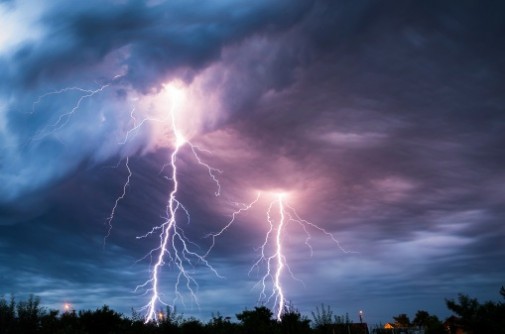4 common types of lightning strikes

Although most discussion about lightning in the Chicagoland area over the last week has been in reference to the Blackhawks’ opponent in the Stanley Cup Final, lightning is an important topic of discussion in the medical field during the summer.
The summer months are statistically the most dangerous for lightning strikes, according to the National Weather Service. Storms are more frequent and people spend more time outdoors.
Lightning strikes can take a number of different forms that all pose serious dangers to one’s health and safety.
“Don’t worry about finishing up your last nine holes of golf,” says Dr. Dipul Patadia, emergency medicine physician at Advocate Good Samaritan Hospital in Downers Grove, Ill. “Take shelter immediately when you hear thunder or see lightning.”
Here are the four most common types of lightning strikes according to the NWS:
- Direct strike – As the name suggests, this strike occurs when a person is directly struck by lightning. Although this is what most people picture when they think of lightning strikes, direct strikes are not very common. Direct strikes are the most deadly type of strike, and they usually occur when victims are in open areas.
- Side flash – This type of strike occurs when lightning strikes a tall object, such as a tree or light post, and part of the strike jumps to the person standing near the object. Side flashes usually occur when victims are taking shelter from a storm under a tree and are standing within one or two feet of the object that is struck.
- Ground current – When lightning strikes a tree or any other object, much of the energy from the strike is dissipated into the ground that surrounds the object. This dissipated energy can electrocute a person who is standing on the ground nearby. Ground currents, although not a very well-known form of lightning, can cause more injuries and fatalities than any other type of strike because of the large area they can cover.
- Conduction – This type of strike occurs when a person is in contact with a metal object, such as a fence or pole that is struck. Although metal does not attract lightning, it is a conductor of electricity, and lightning can travel great distances along metal. This is most often the cause of indoor lightning strikes when a victim is in contact with metal wiring, plumbing, or any other metal surface that extends to the exterior of the building.
Dr. Patadia also says that the survivability for lightning strikes can be high, and stresses if a person sees someone get struck by lightning, immediately call 911 and administer CPR to the victim in order to resuscitate them.
Related Posts
Comments
One Comment
About the Author
health enews staff is a group of experienced writers from our Advocate Health Care and Aurora Health Care sites, which also includes freelance or intern writers.


















Thank you Dr. Patadia. I know all the ways to survive lightning. You did such a great job that the lightning mafia is after you. Buy a tinfoil hat to protect yourself from the mafia. Also beware of the Afric Eleph.